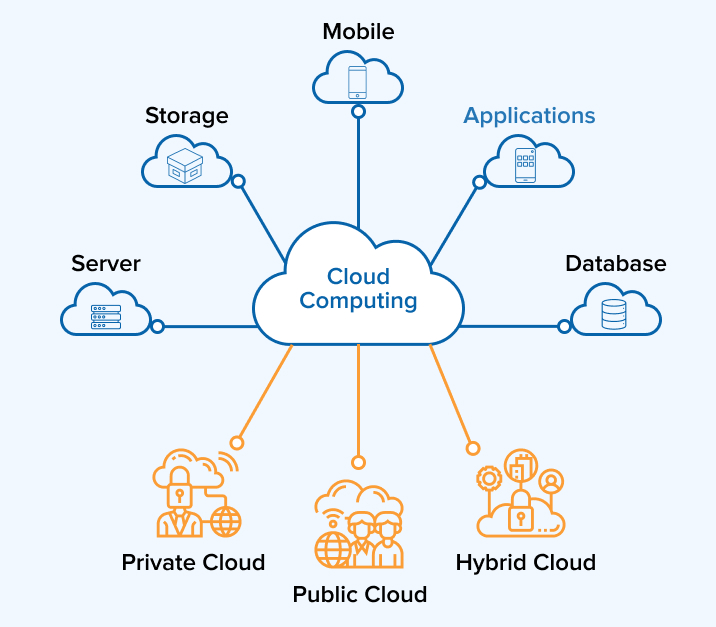Universal Cloud Service: Versatile and Scalable Solutions for Every Market
Universal Cloud Service: Versatile and Scalable Solutions for Every Market
Blog Article
Achieve Seamless Scalability With Cloud Provider
In the ever-evolving landscape of cloud solutions, attaining smooth scalability stands as a keystone for modern services seeking to remain affordable and adaptable. The capacity to effortlessly expand or get sources in feedback to altering needs is a crucial benefit in today's fast-paced electronic atmosphere. By mastering the art of scalable cloud remedies, companies can not just enhance performance and streamline operations but likewise lead the way for future development and advancement. The mission for seamless scalability with cloud services introduces a globe of opportunities for those going to welcome the transformative power of dynamic resource monitoring.
Advantages of Cloud Scalability
Cloud scalability provides organizations the adaptability to dynamically adjust sources based on demand, guaranteeing ideal performance and expense efficiency. In addition, cloud scalability advertises technology and experimentation by allowing organizations to conveniently evaluate new concepts and range them as required. Ultimately, the benefits of cloud scalability extend past cost financial savings to incorporate improved efficiency, agility, and innovation.
Trick Functions for Scaling
Effective scaling in cloud services depends on key features that allow companies to change sources dynamically based upon demand. One vital attribute for scaling is elasticity, permitting sources to scale up or down in reaction to rising and fall work. This ensures that companies can fulfill performance requirements without over-provisioning sources. One more essential feature is scalability, enabling systems to manage increased workload by including resources flawlessly. This feature is crucial for fitting development without endangering performance. Furthermore, automation plays an essential function in scaling by automating the provisioning and de-provisioning of sources based upon predefined policies. Automation lowers human intervention, boosts performance, and ensures rapid action to transforming needs. Monitoring and analytics tools are additionally vital for scaling, supplying understandings right into source utilization, performance metrics, and prospective traffic jams. These devices make it possible for organizations to make enlightened decisions and enhance source allotment for efficient scaling. Overall, these key features collectively equip organizations to accomplish seamless scalability in cloud solutions.
Applying Auto-Scaling Methods
To properly enhance resource allocation and adapt to differing workloads, organizations must tactically carry out auto-scaling techniques in their cloud services framework. Auto-scaling allows systems to automatically readjust the number of compute sources based on real-time need. There are numerous auto-scaling methods that companies can use, such as anticipating scaling, which uses historical information to forecast future source requirements, and reactive scaling, which reacts to current work modifications.

Best Practices for Scalability
For companies aiming to boost their scalability in cloud solutions, carrying out finest practices is crucial for this website optimal efficiency and source management. One trick finest method is developing applications with a microservices architecture. This strategy breaks down applications right into smaller, independent solutions that can be deployed, upgraded, and scaled separately, enabling greater adaptability and scalability.
One more vital method is using containerization technology, such as Docker or Kubernetes. Containers make it possible for the packaging of applications and their reliances right into separated systems, making it easier to scale parts individually and deploy them continually across different atmospheres.
Furthermore, applying automated implementation and framework as code (IaC) can enhance scalability efforts (linkdaddy cloud services). Automation devices like Terraform or Ansible help in provisioning and handling resources successfully, minimizing hand-operated errors and making it possible for fast scalability
In addition, checking performance metrics, setting up signals, and carrying out normal ability planning are necessary methods to ensure proactive scalability management. By adhering to these ideal practices, companies can accomplish seamless scalability in their cloud services while optimizing performance and source utilization.
Surveillance Efficiency Metrics
When evaluating the performance of cloud solutions scalability, closely keeping track of performance metrics is necessary for making certain optimal functionality and resource allotment. By continuously tracking key efficiency indications (KPIs) such as response times, resource, latency, and throughput utilization, companies can get beneficial understandings into the health and wellness and efficiency of their cloud facilities. Monitoring efficiency metrics enables the early detection of prospective bottlenecks or issues that could impact scalability, allowing positive steps to be required to address them prior to they escalate.

Final Thought
Finally, achieving seamless scalability with cloud services is crucial for organizations to maximize efficiency, improve innovation, and maintain high efficiency degrees during peak times. By leveraging the benefits of cloud he said scalability, executing auto-scaling techniques, using key features such as elasticity and automation, and following best techniques like application layout and efficiency tracking, businesses can successfully scale their systems while optimizing source usage and performance.
The pursuit for seamless scalability with cloud services reveals a globe of possibilities for those willing to welcome the transformative power of dynamic source management.
Cloud scalability provides organizations the adaptability to dynamically Home Page change sources based on demand, making certain ideal efficiency and price effectiveness. An additional crucial feature is scalability, making it possible for systems to take care of boosted workload by adding sources perfectly.For organizations aiming to boost their scalability in cloud services, carrying out best techniques is vital for optimum performance and source administration.When evaluating the effectiveness of cloud solutions scalability, closely checking performance metrics is essential for making sure optimum functionality and source allotment.
Report this page